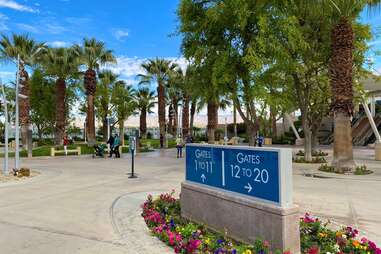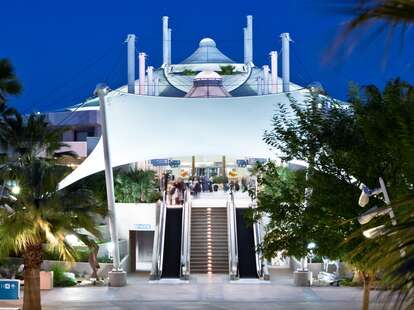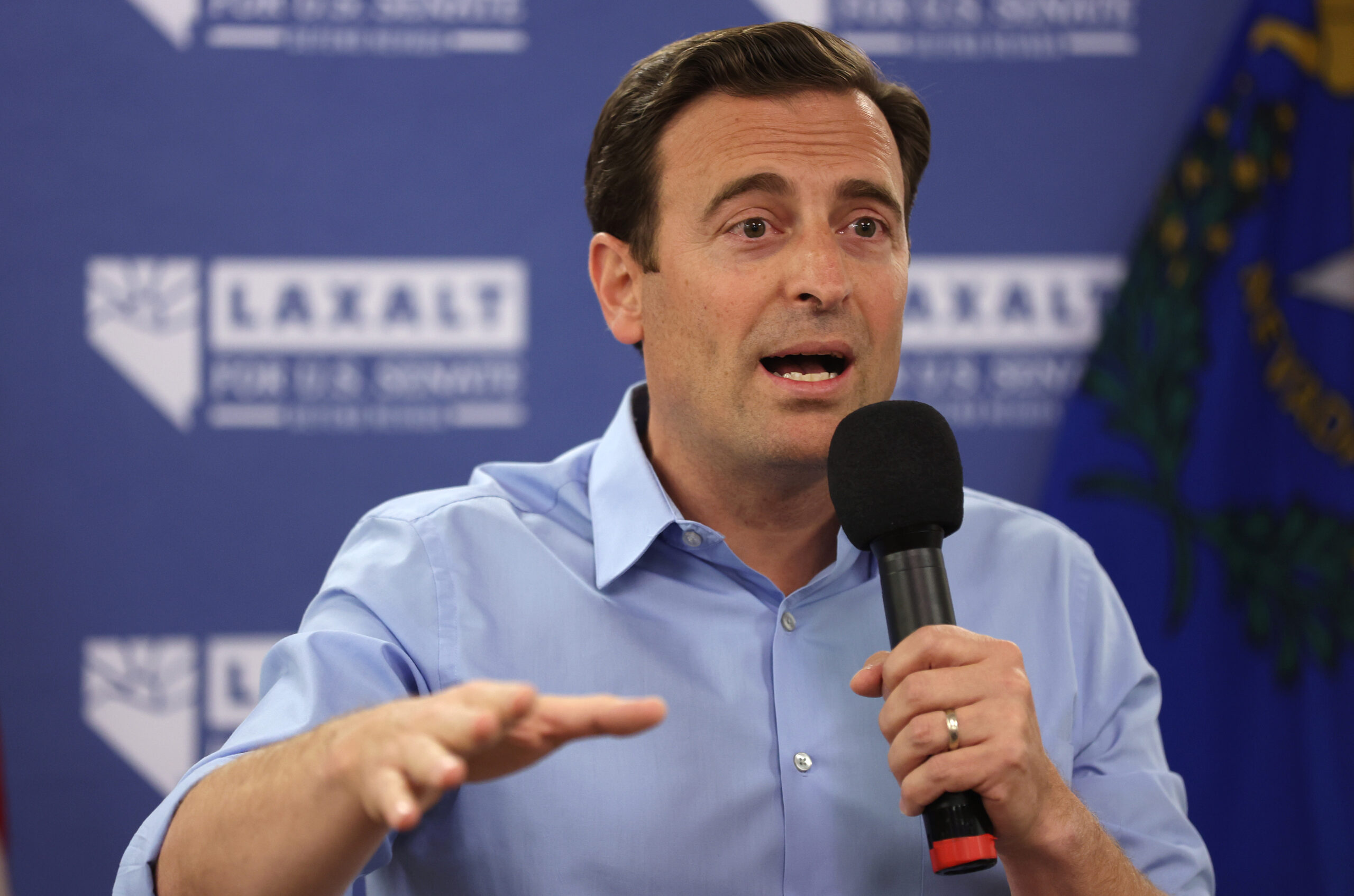
Photo courtesy of Palm Springs Airport
When my friend Peter suggested happy hour at the Palm Springs airport, I had questions. Why, for one, seeing as we had no plans to fly in or out, followed closely by the issue of how.
It was day one of our Southwest road trip and by nightfall, we’d be wild camping outside Joshua Tree National Park, California. Peter’s colleague asked if we had plans to stop in nearby Palm Springs. We didn’t, but he enthusiastically endorsed the city’s airport—apparently a can’t-miss destination unto itself. So, we made it one.
Like most airports, the good stuff at PSP lies on the other side of security. Undeterred, and a little punch-drunk from the long drive, Peter and I booked the cheapest same-day tickets we could find: an American Airlines flight to Phoenix for $123 that we had no intention of taking.
While I wouldn’t call this the most unusual pitstop I’ve made on a road trip, it might be the priciest. (Our campsite that night would be free, we reasoned.) But after decades of sprinting through stuffy airports whose only redeeming quality is the destination on the other side, discovering one that was actually fun to hang out in before takeoff was priceless.

We pulled into PSP around 5pm. The sun was still high above the San Jacinto Mountains, whose stark ridges make the terminal’s mid-century modern lines look futuristic. These same mountains shield the airport from desert winds, which is important—most of PSP is completely outdoors.
You might call it an “open-air-port.” Passing through security into a breezy plaza strewn with palm trees, I half expected to see a welcome committee handing out fruity cocktails and leis. Instead of looking bored or anxious, passengers were having picnics on the grassy patches and strolling around the mini lagoon.

The open layout is enough to make passengers audibly “wow” as they exit the jet bridge, says Daniel Meier, the deputy director of aviation, marketing, and air services. He’s overheard this many times via the echo that carries down to baggage claim.
Rain? Not really a problem, given the annual precipitation in Palm Springs averages just five inches. When it does drizzle, airport staff are ready with umbrellas and rugs to prevent passengers from slipping on the exposed walkways. More common in the desert is extreme heat, though there’s an answer for that too: sheltered gates, shade areas, misters, and climate control.

PSP got its start in 1939 as an Army Air Corps landing field, and there is still a vintage aircraft on site. A short drive from the terminal, travelers can see hangars full of wartime fliers at the Palm Springs Air Museum. Tours are often veteran-led, and there’s nothing like surveying old-school planes with someone who used to pilot them to make you appreciate an upcoming flight.
Today’s PSP is like a miniature Palm Springs. Donald Wexler, the architect responsible for the city’s modern desert aesthetic, drew up blueprints for PSP in the early 1960s. The terminal’s 30-foot windows took his steel-and-glass aesthetic to new heights. The design was inspired by the Jet Age, Meier tells me, noting the terminal’s aerodynamic overhang. But after various expansions and renovations, aerial shots of the tented, disk-shaped airport scream desert UFO more than 737.
Outside the terminal, departing passengers may recognize what Meier refers to as the “art benches.” The color-blocked benches were painted by local artists as part of a beautification project by the Palm Springs Public Arts Commission, matching dozens more that are scattered downtown. Art inside the airport similarly reflects what you’ll find at the Palm Springs Art Museum, notably the Dale Chihuly glasswork on display in both.

The places to shop, eat, and drink inside PSP cement its microcosmic effect. Golfers can stock up on souvenir polos at the award-winning PGA Tour Shop after flexing their putters on the city’s 100-plus courses. Weekenders might prefer one last glass of local chardonnay from the California Vintages Wine Bar. Next door, at the PSP Coffee House, travelers can sip lattes beneath photos of the Rat Pack, whose own Frank Sinatra claimed Palm Springs as a refuge from Hollywood during its Golden Age.
Arriving passengers may be less inclined to loiter—they have canyons to hike, celebrity tours to take, and pool parties to attend, even in January. Some may continue on to Joshua Tree or neighboring Anza-Borrego State Park. This airport is quite literally a gateway to some of Southern California’s most iconic landscapes.
Peter and I beelined for Santa Rosa Kitchen and Spirits in the Sonny Bono Concourse, which is both a tribute to the singer turned mayor, and a candidate for the greatest concourse name in airport history. We sat almost close enough to the runway to feel the draft of incoming and outgoing engines cut through the dry desert air. I ordered a margarita. He got a beer. We sipped our drinks beneath the slowly dusking sky, far from the fluorescent lights of other airport bars. I was only left wondering when I’d have the pleasure of returning—maybe even for an actual flight.
Alex Bresler is a contributor for Thrillist.







